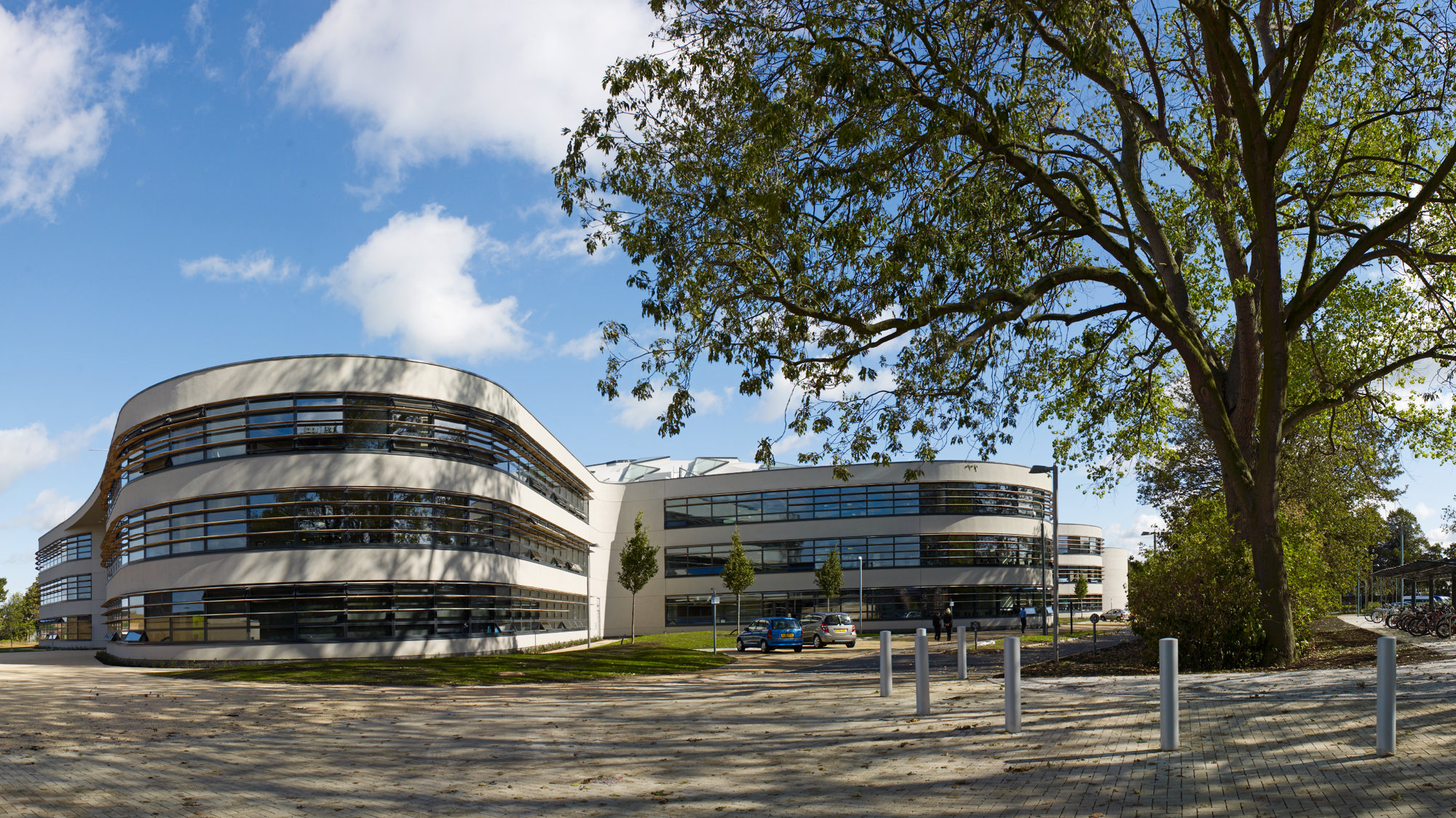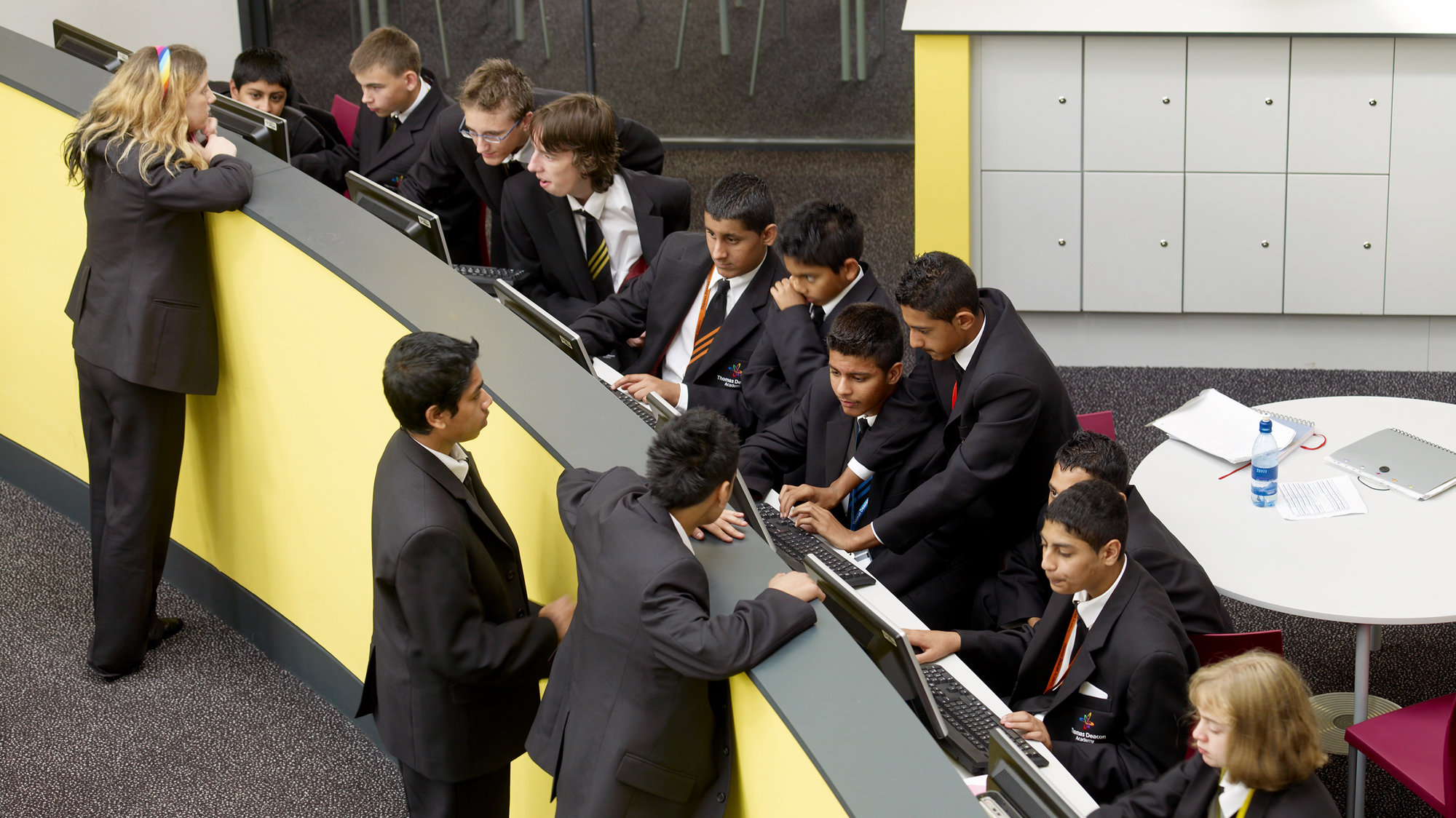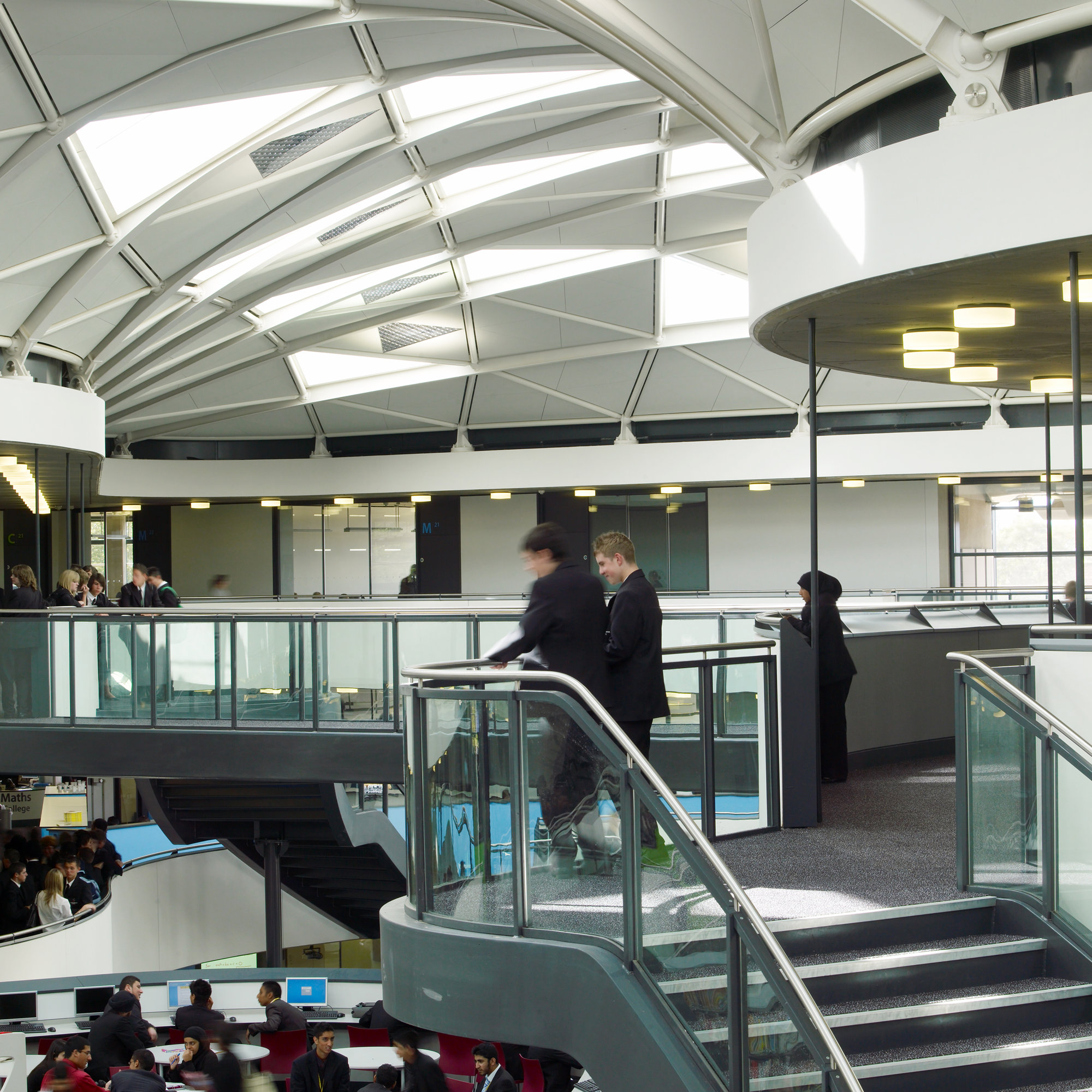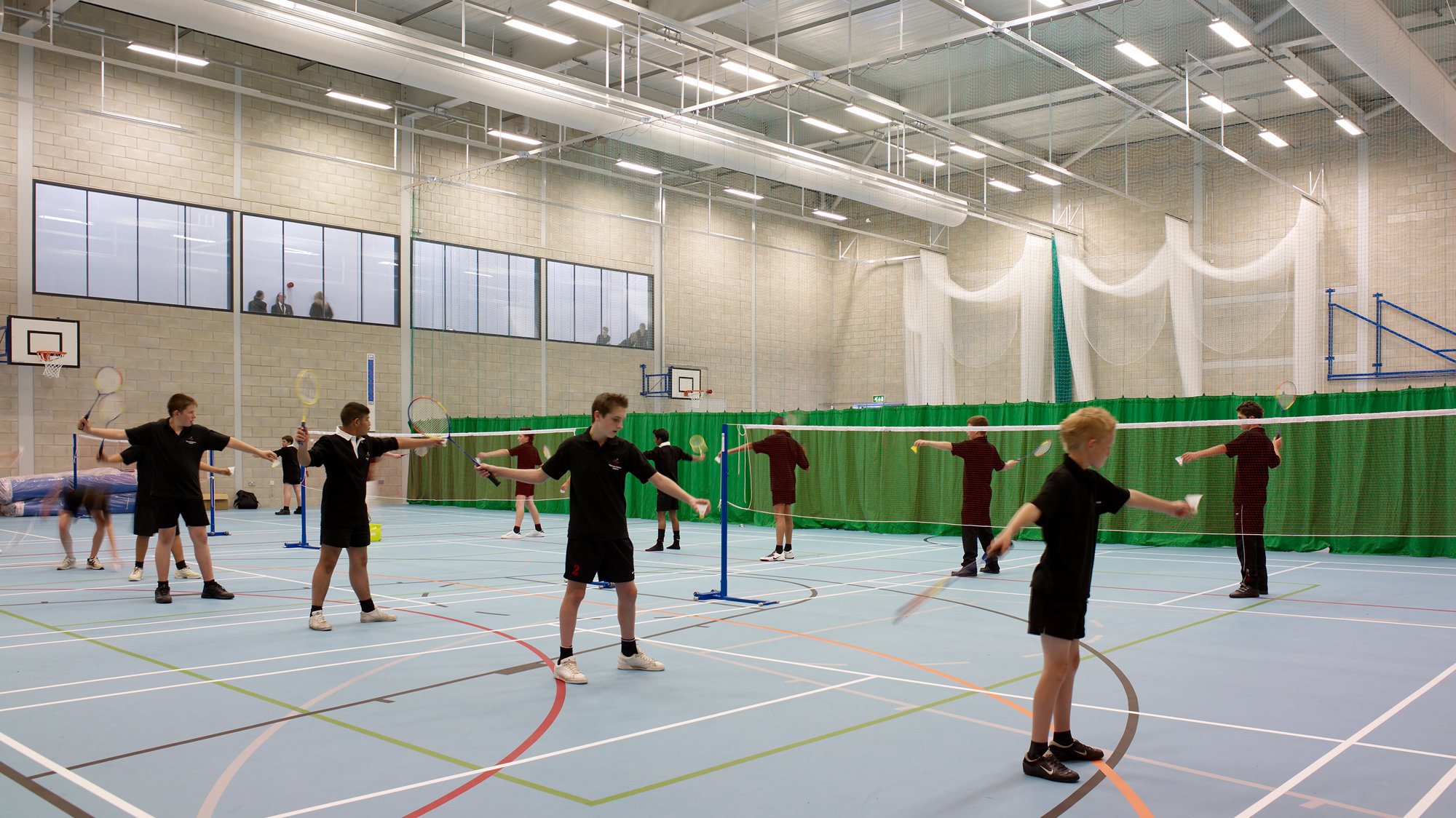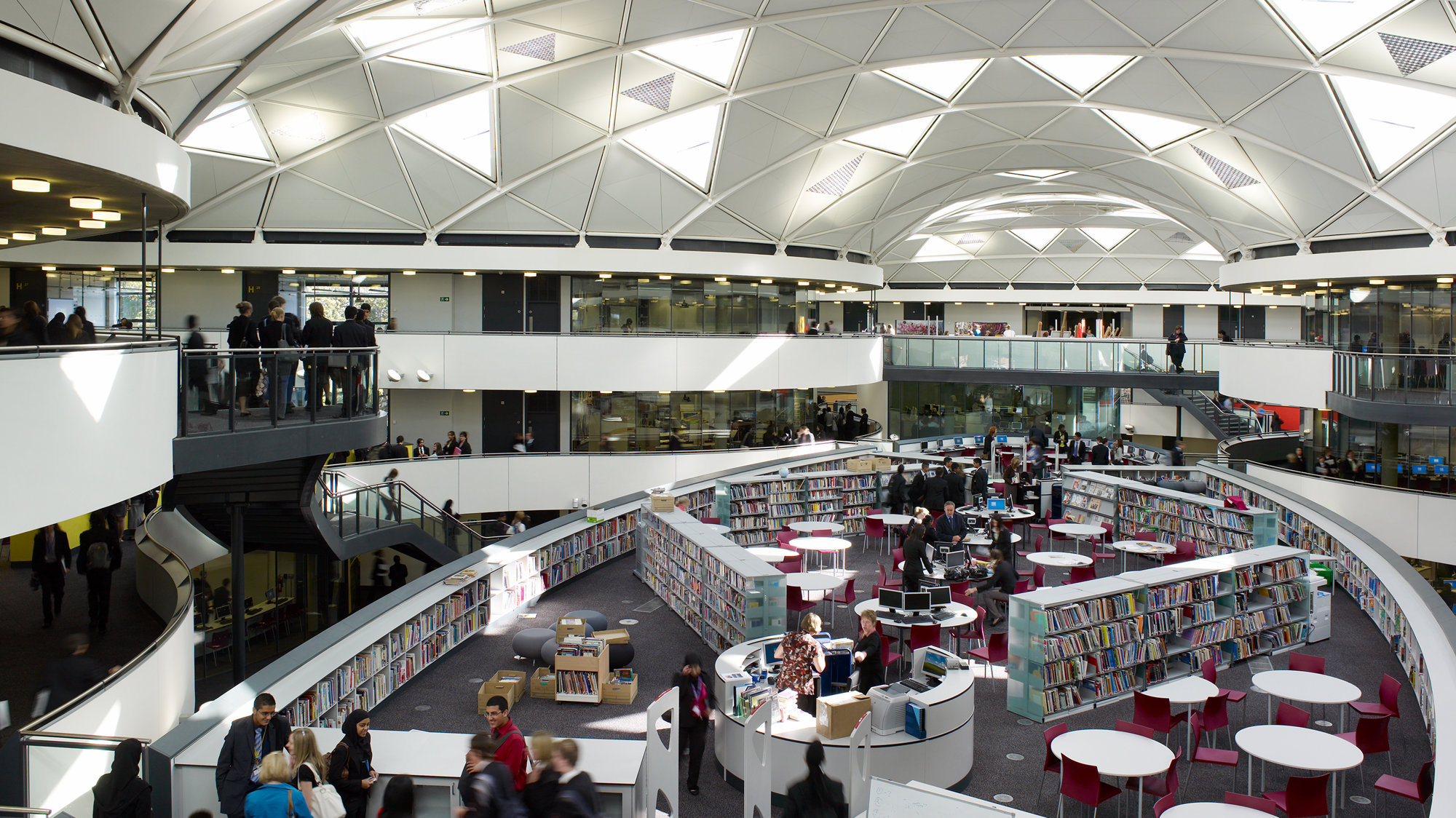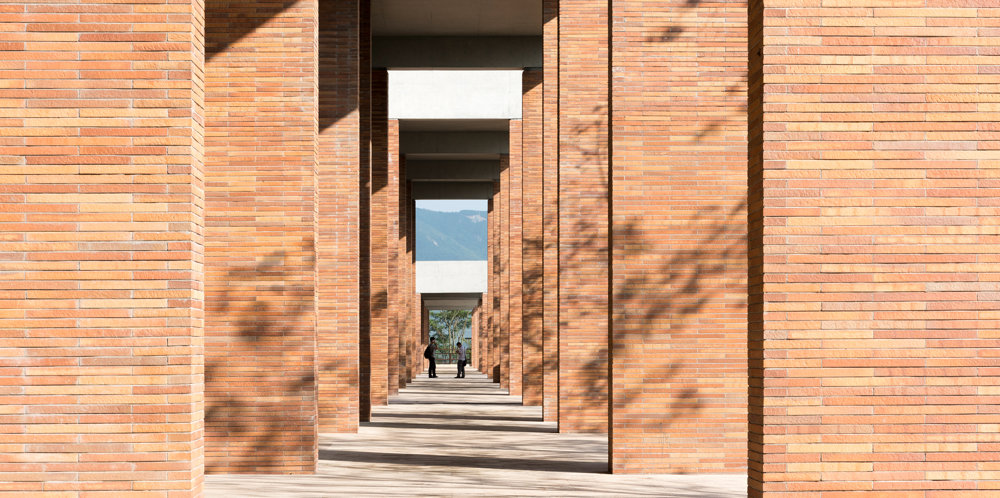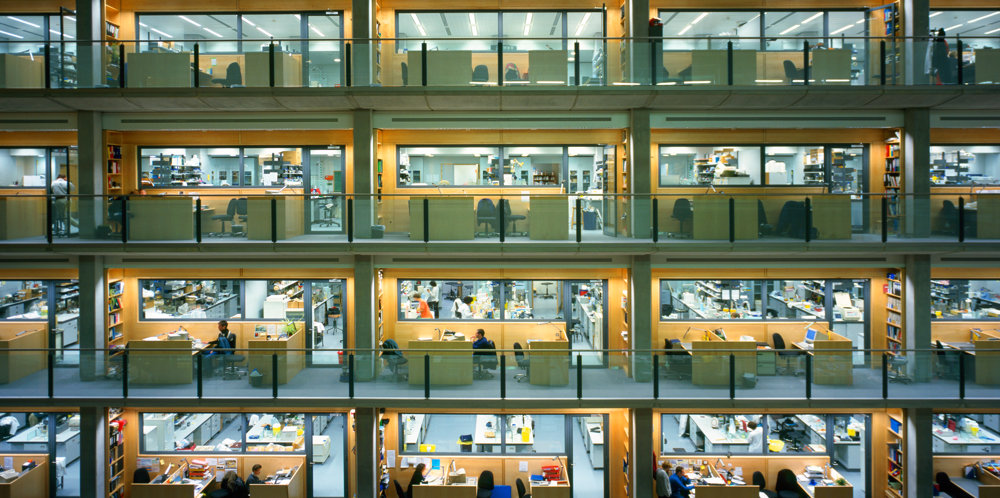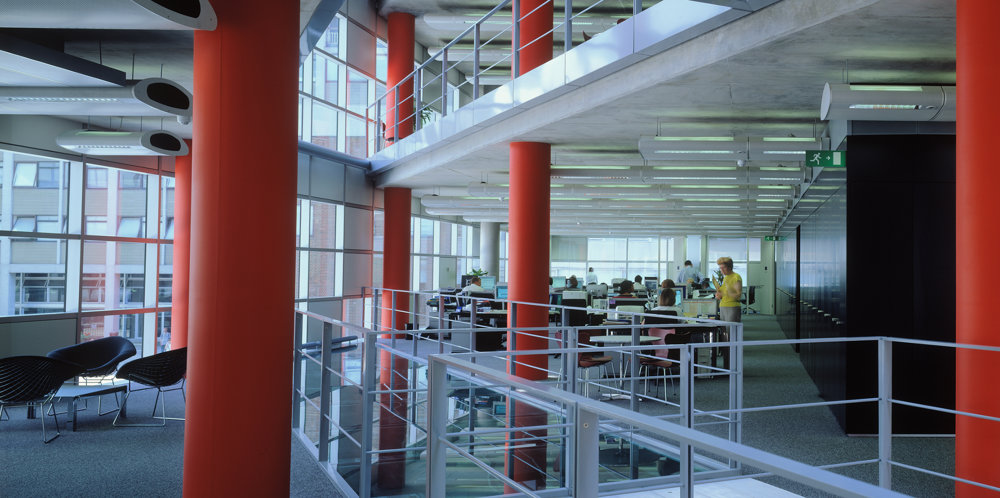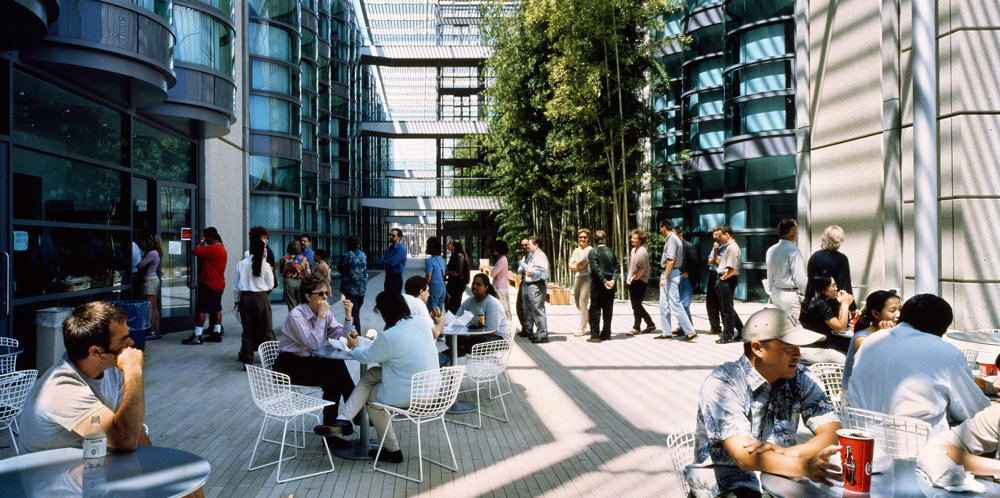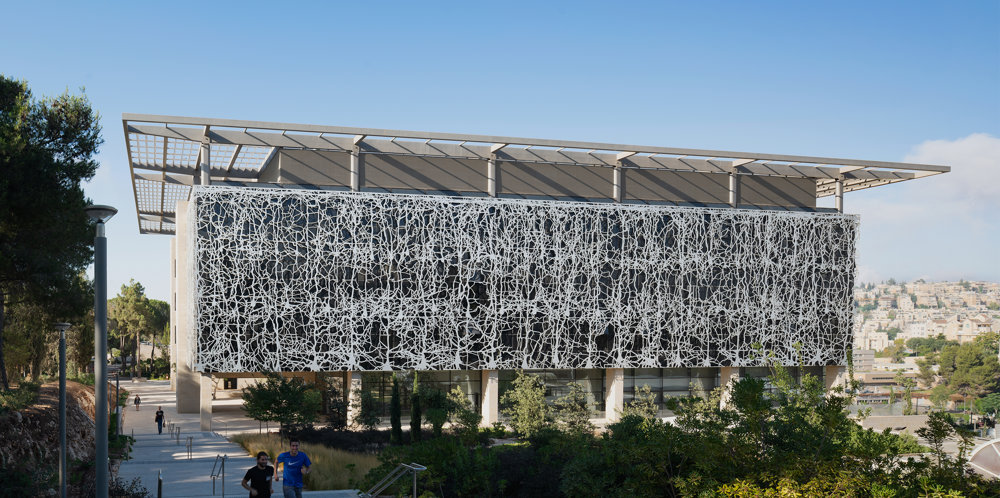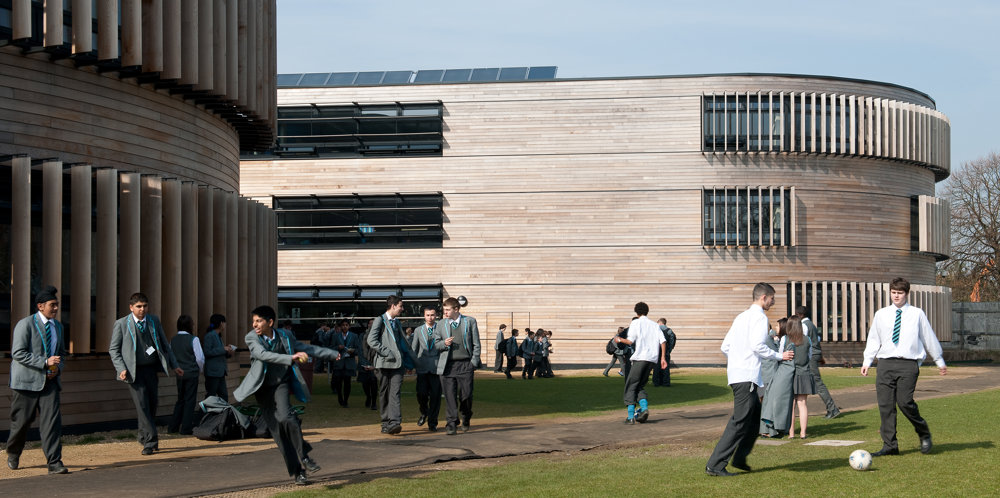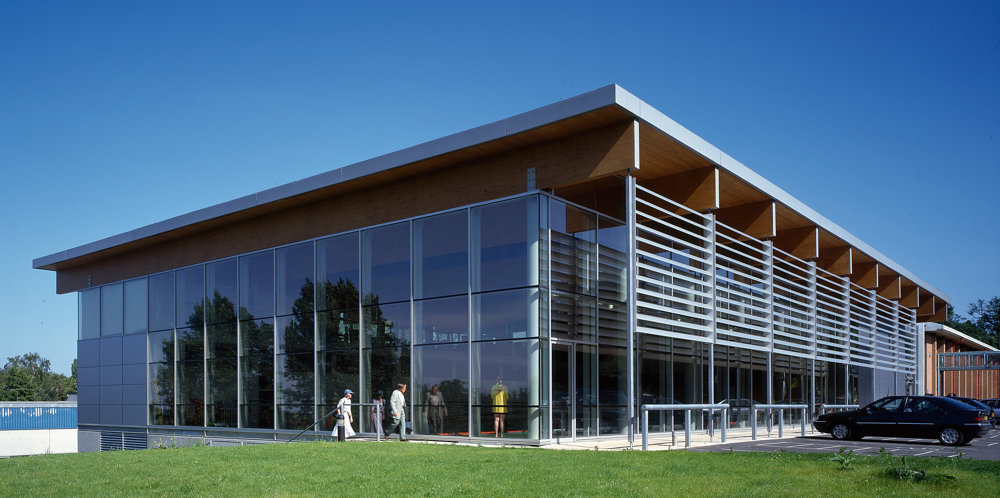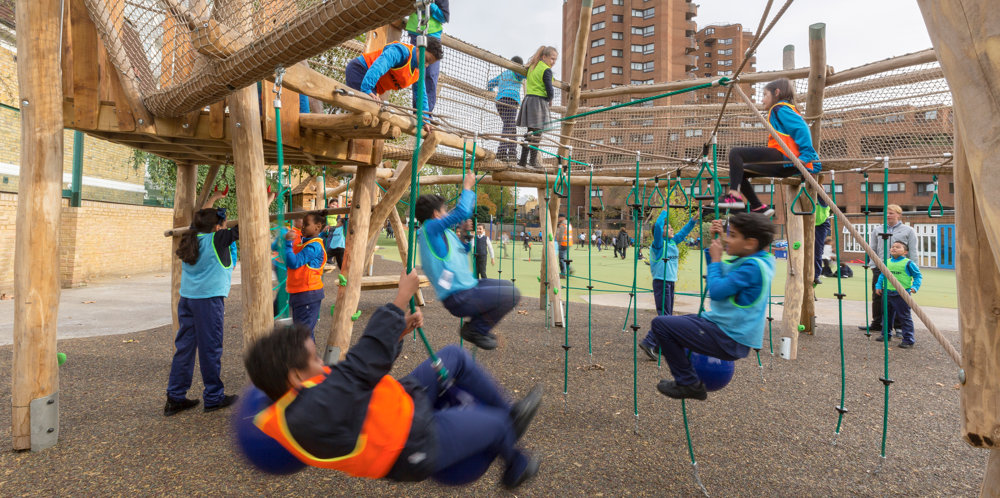With 2,200 students, the Thomas Deacon Academy is one of the largest projects completed by the practice as part of the government’s academy school building programme. It has a unique teaching system, akin to a university, with lessons complimented by lectures, seminars and one-to-one tutorials. Instead of responding to the Academy’s scale and collegiate structure with an open plan campus of individual blocks, the six distinct colleges are unified beneath a single roof canopy, creating the school’s highly flexible internal ‘civic square’.
Each three-storey college has its own teaching areas and communal spaces, including a ‘Network Study Area’ – a flexible space for recreation or collective study – and a glazed classroom, which acts as the ‘shop window’ for each subject. The six volumes are connected internally by a dramatic central concourse, enclosed by a partially glazed roof. Comprising a patchwork of triangular acoustic panels, vents and light-reflecting inserts, and braced by arching steel beams, the canopy animates the interior with patterns of light and shade. At the heart of the concourse, there is a stacked oval volume, containing a lecture theatre at ground level and a library above. A ribbon of classrooms and break-out areas winds around the central space, while quieter teaching and study spaces line the perimeter of the building, with views of the sports fields. By increasing the external edge, this arrangement maximises the potential to draw natural light and ventilation inside. The design incorporates a number of passive environmental strategies designed to reduce energy use: the façade is a simple filigree of horizontal brise soleil that provide external solar shading, while inside, the combination of exposed concrete soffits and high-level opening vents allows night air to be drawn into the building, to help cool the interior throughout the day.
The main entrance and crescent-shaped reception desk are located at the westerly end of the building, within a circular waiting area formed between the sweep of two curving balconies. A further jewel-shaped block, containing a 350-seat theatre, sports hall and canteen, extends from the northern edge of the building, where it can be accessed independently of the school and used by the local community.









